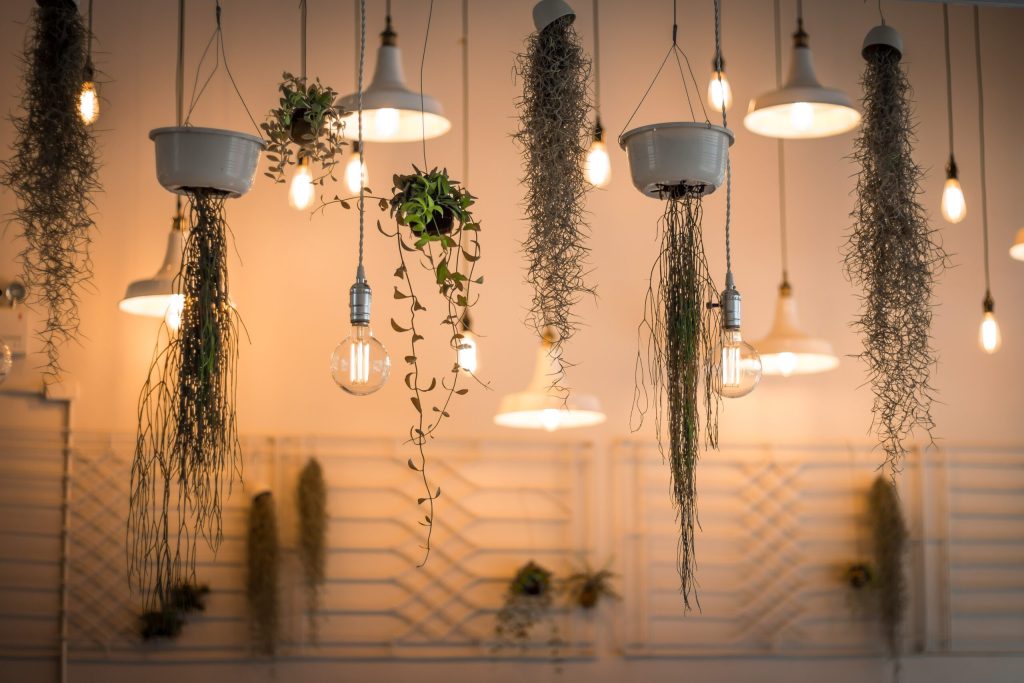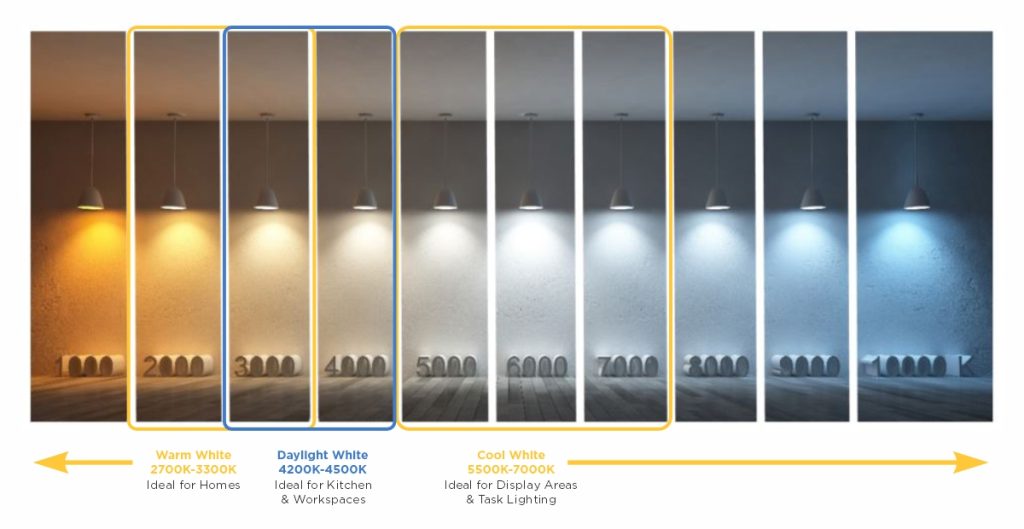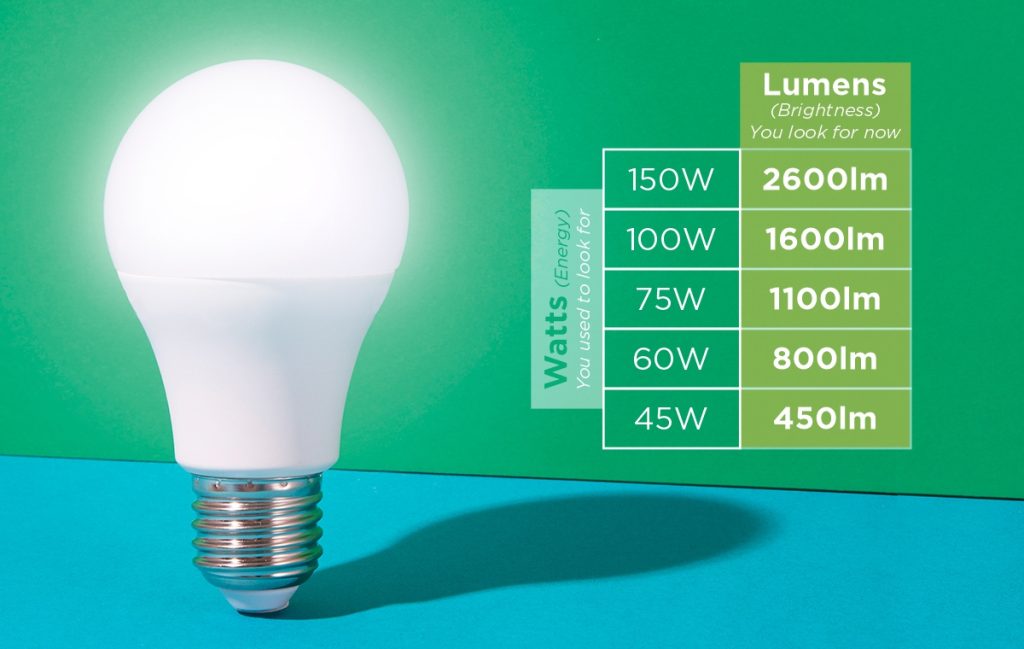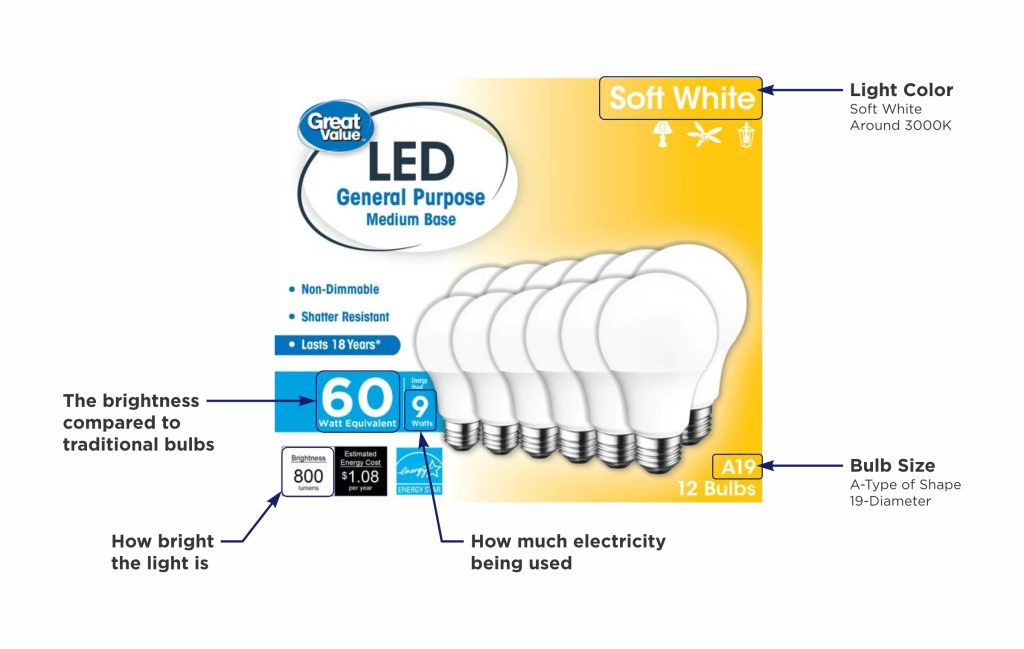Understanding Color Temperature and Brightness
March 14, 2023

You may have been confused the last time you shopped for light bulbs. Callouts like “2700K 9W (60W equivalent, soft white)” jump out at you when reading the box. What does all that gibberish mean? Keep reading to learn about color temperature and brightness so you can decipher these details and choose the right light for you.
COLOR TEMPERATURE

What is color temperature? You probably noticed how some lights have a warm, amber glow while others have a bright, blueish tint. Warm lighting is typically used in sit-down restaurants and homes creating a cozy atmosphere. Cool lighting, on the other hand, is used to promote alertness and productivity. It is mostly used in medical and manufacturing settings. This variation in color is known as color temperature. You can read more about it here.
Who is Kelvin and what does he have to do with lights? Kelvin (K) is a unit of measurement for temperature named after the renowned mathematician William Thomson, 1st Baron Kelvin. Kelvins are used to identify color temperature. For example, the higher the number of Kelvins, the cooler and bluer the color is as seen in the chart below.
BRIGHTNESS

What are lumens? Lumens (lm) is the total amount of light emitted from a source. The higher the lumens rate, the brighter the light appears.
Then what are watts? Back when dinosaurs roamed the Earth and your grandparents had to walk uphill both ways to school, you would buy a light bulb based on the wattage. For example, the kitchen needs more light to avoid chopping off any fingertips, therefore, you’d get the 100-watt bulb instead of the 60-watt. As a result, the idea that the number of watts correlates to the brightness of the light began. This is actually a misconception. Wattage refers to the amount of electricity being used whereas lumens refer to brightness.
Then what does 9W (60W Equivalent) mean on the box? We get it. It’s a little confusing. We used to use incandescent light bulbs which required more electricity. Thanks to advances in technology, we now use energy-efficient LED lights. So when the box says “9W (60W Equivalent)”, it is saying that the new LED light bulb uses only 9 watts of electricity to glow like the old 60-watt bulbs. It’s supposed to help the older generation understand how bright the bulb is. What is most important here is that you would be using far less electricity to create the same amount of light resulting in a much happier wallet.
BRING IT ALL TOGETHER

Phew, that was a lot of information! Let’s take everything we learned and decipher the box as promised.
Here are the key takeaways: color temperature sets the mood while lumens are all about brightness. The biggest takeaway is that there’s an LED light bulb for every space and situation. They last longer, are more durable, and are cheaper to use.
If you’re interested in switching to LED at your business, email us here. We are happy to assist with recommendations and any available rebates that you may qualify for.

